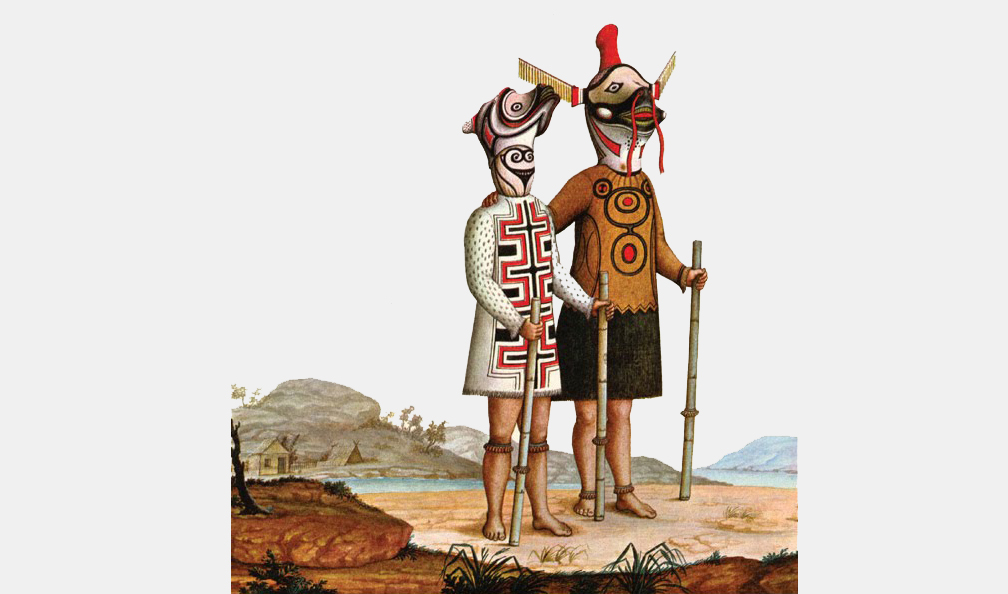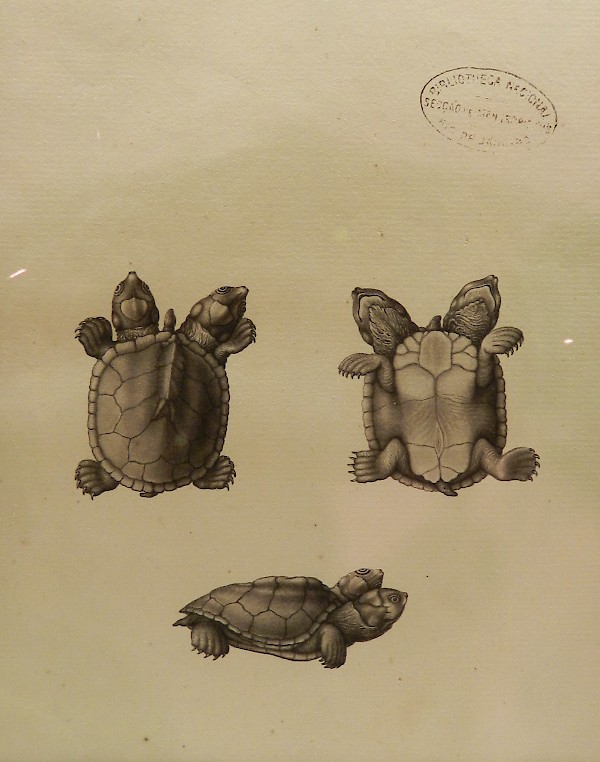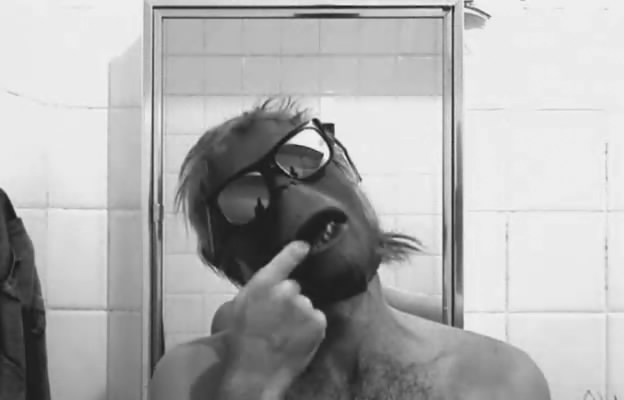— Is There Any World to Come?
Translated by Rodrigo Nunes

The problem of the end of the world is always formulated as a separation or divergence, a divorce or orphaning resulting from the disappearance of one pole in the duality of world and inhabitant—the beings whose world it is. In our metaphysical tradition, this being tends to be the “human,” whether called Homo sapiens or Dasein. The disappearance may be due to either physical extinction or one pole’s absorption by the other, which leads to a change in the persisting one. We could schematically present this as an opposition between a “world without us,” that is, a world after the end of the human species, and an “us without world,” a humanity bereft of world or environment, a persistence of some form of humanity or subjectivity after the end of the world.
But to think the future disjunction of world and inhabitant inevitably evokes the origin of its present, precarious conjunction. The end of the world projects backward a beginning of the world; the future fate of humankind transports us to its emergence. The existence of a world before us, although regarded as a philosophical challenge by some (if Meillassoux’s subtle argument is to be believed1 See Quentin Meillassoux, Après la finitude. Essai sur la nécessité de la contingence (Paris: Seuil, 2006) ), seems easy enough for the average person to imagine. The possibility of an us before the world, on the other hand, is less familiar to the West’s mythological repertoire.
Yet it is a hypothesis explored in several Amerindian cosmogonies. It finds itself conveniently summarized in the commentary that opens a myth of the Yawanawa, a people of Pano-speakers from the western Amazon: “The myth’s action takes place in a time in which ‘nothing yet was, but people already existed.’”2 Miguel Carid, Yawanawa: da Guerra à Festa, MA dissertation, PPGAS / UFSC (1999), 166, quoted in Oscar Calavia, “El Rastro de los Pecaríes. Variaciones Mí́ticas, Variaciones Cosmológicas e Identidades É́tnicas en la Etnología Pano,” Journal de la Société des Americanistes 87: 161–76. The variation of the Aikewara, a Tupian-speaking people who live at the other end of the Amazon, adds a curious exception: “When the sky was still very close to the Earth, there was nothing in the world except people—and tortoises!”3Orlando Calheiros, Aikewara: Esboços de uma Sociocosmologia Tupi-Guarani, PhD Thesis, PPGAS / Museu Nacional do Rio de Janeiro (2014), 41.
At first, then, everything was originally human, or rather, nothing was not human (except for tortoises, of course, according to the Aikewara). A considerable number of Amerindian myths—as well as some from other ethnographic regions—imagine the existence of a primordial humankind, whether fabricated by a demiurge or simply presupposed as the only substance or matter out of which the world could have come to be formed.
These are narratives about a time before the beginning of time, an era or eon that we could call “pre-cosmological.”4Eduardo Viveiros de Castro, “The crystal forest: notes on the ontology of Amazonian spirits,” Inner Asia 9 (2) (2007): 153–72. These primordial people were not fully human in the sense that we are, since, despite having the same mental faculties as us, they possessed great anatomic plasticity and a certain penchant for immoral conduct (incest, cannibalism). After a series of exploits, some groups of this primordial humankind progressively morphed—either spontaneously or due to the action of a demiurge—into the biological species, geographical features, meteorological phenomena, and celestial bodies that comprise the present cosmos. The part that did not change is the historical, or contemporary, humankind.5With some improvement in the moral field, literal cannibalism, for instance, becomes objectively unnecessary, since, with the advent of the cosmological era, animals and plants adequate for human nourishment appear.
One of the best illustrations of this general type of cosmology is described in great detail in the autobiography of Yanomami shaman and political leader Davi Kopenawa.6 See Davi Kopenawa and Bruce Albert, La Chute du Ciel: Paroles d’un Chaman Yanomami (Paris: Plon, 2010); Bruce Albert, Temps du Sang, Temps des Cendres: Représentation de la Maladie, Système Rituel et Espace Politique chez les Yanomami du Sud-Est (Amazonie Brésilienne), PhD thesis (1985), Université de Paris X (Nanterre). We could also recall ideas from the Ashaninka (Campa), an Arawak people both geographically and culturally distant from the Yanomami:
Campa mythology is largely the story of how, one by one, the primal Campa became irreversibly transformed into the first representatives of various species of animals and plants, as well as astronomical bodies or features of the terrain … The development of the universe, then, has been primarily a process of diversification, with mankind as the primal substance out of which many if not all of the categories of beings and things in the universe arose, the Campa of today being the descendants of those ancestral Campa who escaped being transformed.7Gerald Weiss, “Campa Cosmology,” Ethnology 9 (2) (1972): 169–70. “Many, if not all categories”— compare this to the Aikewara exception concerning tortoises in the characterization of the pan-human state of pre-cosmological reality. These provisions are important because they highlight an essential dimension of Amerindian mythocosmologies: such expressions as “nothing,” “everything,” or “all” function as qualifiers (not to say “quasifiers”) more than as quantifiers. We cannot delve deeper into this discussion here, but it carries obvious implications as to the adequate comprehension of the indigenous concepts of cosmos and reality. Everything, including “the Everything,” is only imperfectly totalizable: the exception, the remainder, and the lacuna are (almost always) the rule.
We could also mention the cosmogony of the Luiseño from California, evoked in The Jealous Potter by Claude Lévi-Strauss, in which the cultural hero Wyiot differentiates the originary human community into the various species of currently existing beings.8 Claude Lévi-Strauss, La Potière Jalouse (Paris: Plon, 1985), 190–92. The theme is also found in some non-Amerindian cultures: for example, the Kaluli from Papua New Guinea recount that “at that [pre-cosmological] time, according to the prevailing story, there were no trees or animals or streams or sago or food. The Earth was covered entirely by people.”9Edward Schieffelin, The Sorrow of the Lonely and the Burning of the Dancers (New York: St. Martin’s Press, 1976), 94. A man of authority (a big man) then decided to transform the different groups of people into different species and other natural phenomena: “those who were left aside became the ancestors of human beings.”

We can see how, in Amerindian thought (and some others), humankind or personhood is both the seed and the primordial ground, or background, of the world.10 That statement requires nuancing and differentiating in regard to several Amerindian cosmologies, not to mention the occasional exception to it. There is an ongoing debate on the extension and comprehension of this mythophilosopheme regarding a primordial or infrastructural humankind in indigenous America, a debate that is tied with another one around the concepts of “animism” and “perspectivism,” which we will not explore here.Homo sapiens is not the character who comes to crown the Great Chain of Being by adding a new ontological layer (spiritual or “cognitive,” in modern parlance) on top of a previously existing organic layer that would, in turn, have emerged out of a substrate of “dead” matter. In the West’s mythophilosophical tradition, we tend to conceive animality and nature in general as referring essentially to the past. Animals are living arche-fossils, not only because beasts roamed the Earth long before we did (and because these archaic beasts were like magnified versions of present animals), but because the human species has its origin in species that are closer to pure animality the more we recede in time.11See Günther Anders, Le Temps de la Fin (Paris: L’Herne, 2007), 75: “the pre-human region whence we came is that of total animality.”
By virtue of a felicitous innovation—bipedalism, neoteny, cooperation—the Great Watchmaker, whether blindly or omnisciently, conferred upon us a capacity that made us into more-than-organic beings (in the sense of Alfred Kroeber’s “superorganic”), endowed with that spiritual supplement that is “proper to man”: the species’ precious private property. Human exceptionalism, in short: language, labor, law, desire; time, world, death. Culture. History. Future. Humans belong to the future like animals belong to the past—our past, since animals themselves are, as far as we are concerned, trapped inside an exiguous world within an immobile present.

Yet that is not, as we can see, how things go as far as these other humans who are the Amerindians and other non-modern humankinds are concerned. One of the things that make them other consists precisely in the fact that their concepts of the human are other to our own. The world as we know it, or rather the world as the indigenous knew it, is the present world that exists (or existed) in the interval between the time of origins and the end of times—the intercalary time that we could call the “ethnographic present” or the present of ethnos, as opposed to the “historical present” of the nation-state. Our present world that exists is conceived in some Amerindian cosmologies as the epoch that began when pre-cosmological beings suspended their ceaseless becoming-other (erratic metamorphoses, anatomic plasticity, “unorganized” corporeality) in favor of greater ontological univocality.12“Ethnographic present” is what anthropologists call, nowadays almost always with a critical intention (although Hastrup has raised an important objection to that), the discipline’s classic narrative style, which situates monographic descriptions in a timeless present more or less coetaneous with the observer’s fieldwork. This style pretends to ignore the historical changes (colonialism, etc.) that allowed precisely for ethnographic observation. We shall use the expression, however, in a sense doubly opposed to that, so as to designate the attitude of “societies against the state” in regard to historicity. The ethnographic present is therefore the time of Lévi-Strauss’s “cold societies,” societies against accelerationism, or slow societies (as one speaks of slow food or slow science—see Isabelle Stengers), for whom all cosmopolitical changes necessary for human existence have already taken place, and the task of ethnos is to secure and reproduce this “always already.” See Kirsten Hastrup, “The Ethnographic Present: A Reinvention,” Cultural Anthropology 5/1: 45–61; Isabelle Stengers, Une Autre Science Est Possible! Manifeste pour un Ralentissement des Sciences (Paris: La Découverte, 2013).
Putting an end to the “time of transformations”—a common expression among Amazonian cultures—those unstable anthropomorphs who lived at the origins took on the forms and bodily dispositions of those animals, plants, rivers, and mountains that they would eventually come to be. This was, in fact, already prefigured in the names they bore in the absolute past; thus, for example, the Peccary Yanomami—the tribe of originary people who had the name “Peccary” [queixada]—became the term “peccary,” that is, the wild pigs that we hunt and eat today (Yanomani means “people” in their language). The whole world (though again, perhaps not the tortoise or some other oddity) is virtually included in this originary proto-humankind; the pre-cosmological situation might thus be indifferently described as a still worldless humankind or as a world in human form, an anthropomorphic multiverse that gives way to a world conceived as the result of the (never quite finished) stabilization of the infinite potential for transformation contained in humankind as universal substance, or rather universal “actance,” both originary and persistent.13An Amazonian metaphysician could call this the argument of “human ancestrality” or “the evidence of the anthropofossil.”
We thus see a multiple inversion of the cannibalistic or zombie-apocalypse scenarios that figure in Cormac McCarthy’s The Road and similar narratives: in indigenous mythology, human food consists of humans who morphed into animals and plants; humankind is the active principle at the origin of the proliferation of living forms in a rich, plural world. But the indigenous scheme is also an inversion of the Garden of Eden myth: in the Amerindian case, humans are the first to come, and the rest of creation proceeds from them. It is as if what comes from Adam’s rib is much more than his female complement—rather it is the whole world, the entire infinite rest of it. And names, in their infinite variety, existed, as we have seen, before-alongside things (the Pecari Yanonami, the Jaguar People, the Canoe People … ); things did not wait for a human arche-namegiver to tell them what they were. Everything was first human, but everything was not one. Humankind was a polynomial multitude; it appeared from the start in the form of an internal multiplicity whose morphological externalization—that is, speciation—is precisely what provided the cosmogonic narrative. It is Nature that is born out of or separates itself from Culture, not the other way round, as in our anthropology and philosophy.
We can therefore see that the subsumption of the world by humankind in Amerindian cosmologies travels in the opposite direction to that of the myth of technological Singularity. It refers to the past, not the future; its emphasis is on the stabilization of the transformations that came to differentiate animals from those humans who continued to be so, and not the acceleration of the transformation of the animals we were into the machines we will be.
Indigenous praxis emphasizes the regulated production of transformations capable of reproducing the ethnographic present (life-cycle rituals, the metaphysical management of death, shamanism as cosmic diplomacy), thus thwarting the regressive proliferation of chaotic transformations. Control is necessary because the world’s transformative potential, as attested to by the omnipresent traces of a universal anthropomorphic intentionality and its actions, manifests a residual magnetism that is at once dangerous and necessary. Danger lies in the fact that former humans retain a human virtuality underneath their present animal, vegetal, astral appearance, in a similar (but symmetrically opposed) way to how we often fantasize about being wild animals deep down under our civilized guise.
Nonhumans’ archaic humanoid latency—humanity as the animal unconscious, we could say—constantly threatens to break through the openings and tears in the fabric of the everyday world (dreams, illnesses, hunting incidents), violently reabsorbing humans back into the pre-cosmological substrate where all differences continue to chaotically communicate with each other.14Those beings in indigenous cosmologies that we classify under the heteroclitic category of “spirits” generally tend to be entities that have preserved the ontological lability of the originary people, and which, for that reason, characteristically oscillate between human, animal, vegetable, etc. In turn, the necessity of this residual magnetism lies in the fact that the actualization of the ethnographic present presupposes a recapitulation or counter-effectuation of the pre-cosmological state, because that is the reservoir of all difference, all dynamism, and therefore all possibility of sense.
The anthropomorphic multiverse, in its originary virtuality, is thus both conjured and kept at bay by an animalization of the human—the theriomorphic mask of the spirit-dancer, the becoming-beast of the warrior—which is reciprocally a mythical humanization of the animal.15 Viveiros de Castro, 1996. It is from this double movement that ethnos ceaselessly emerges. The ethnographic present is in no way an immobile “time”; slow societies know infinite speeds, extrahistorical accelerations—in short, becomings—that make the indigenous concept of buen vivir (“good life”) something metaphysically closer to extreme sports than to a relaxed retirement in the countryside.
What we could call the natural world, or “world” for short, is for Amazonian peoples a multiplicity of intricately connected multiplicities. Animal species and other species are conceived as so many kinds of people or peoples, that is, as political entities. It is not “the jaguar” that is human; it is individual jaguars that take on a subjective dimension (more or less pertinent according to the practical context of interaction) when they are perceived as having a society behind them, a collective political alterity.16 The difference between animism and totemism is, in this regard, pace Philippe Descola and with Marshall Sahlins, not very clear and possibly not very meaningful. See Descola, Par-Delà Nature et Culture (Paris: Gallimard, 2005); Sahlins, “On the Ontological Scheme of Beyond Nature and Culture,” HAU: Journal of Ethnographic Theory, 4/1 (2014): 281–90. To be sure, we too—by which we mean we Westerners, a concept that includes, through mere convention, Brazilians of European descent—think, or would like to think that we think, that it is only possible to be human in society, that man is a political animal. But Amerindians think that there are many more societies (and therefore also humans) between heaven and Earth than have been dreamt by our philosophy and anthropology.
What we call the environment is for them a society of societies, an international arena, a cosmopoliteia. There is, therefore, no absolute difference in status between society and environment, as if the first were the subject and the second the object. Every object is always another subject, and is always more than one. The platitude that every novice left-wing militant learns—that everything is political—acquires in the Amerindian case a radical concreteness (for the indeterminacy of this “everything,” see our famous tortoises!) that not even the most enthusiastic activist in the streets of Copenhagen, Rio, or Madrid might be ready to acknowledge.
×
This is an excerpt of Déborah Danowski and Eduardo Viveiros de Castro’s Há mundo por vir? Ensaio sobre os medos e os fins (Cultura e Barbárie, 2014; English translation forthcoming, Polity Press, 2016).


